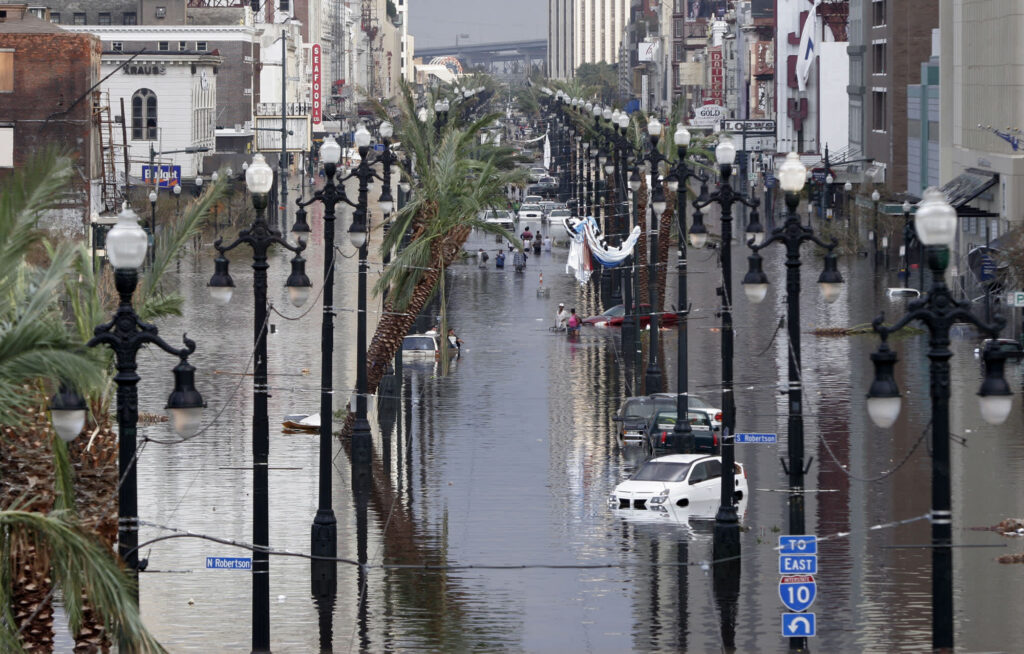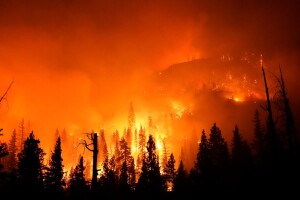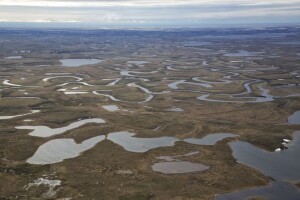Christopher Nolan’s film Oppenheimer, about the theoretical physicist J. Robert Oppenheimer who is widely known as the “Father of the Atomic Bomb,” has partnered with Greta Gerwig’s Barbie, about the doll that began as a blonde bombshell, to create a block-busting Hollywood double feature the likes of which have not been seen since pre-pandemic times. Let’s start by stipulating that Oppenheimer is a magnificent film, as historically and scientifically accurate as it needs to be, with outstanding performances across the board. Cillian Murphy and Robert Downey Jr., are mortal locks to be nominated for Oscars in leading and supporting roles, and the performances of Matt Damon and Emily Blunt are also Academy Awards worthy. Nolan will certainly be nominated for Best Director and I can’t imagine any other film winning Best Picture – unless maybe Barbie because money talks and Ryan Gosling singing “I’m just Ken” is irresistible.

While the explosion of the first atomic bomb – code name “Trinity” – was the highlight of Oppenheimer, the thrust of the film is the conflict within Oppenheimer over his leadership role in the bomb’s development. The Manhattan Project was a massive collaboration involving thousands of individuals, and contrary to conventional wisdom, Oppenheimer was never in charge of the Project, he was the director of the laboratory in Los Alamos, New Mexico, where Trinity, as well as the “Little Boy” and “Fat Man” bombs dropped on Japan, were assembled. Nonetheless, his name is forever linked to the atom bomb and few would argue that his genius and personal charisma were key to the Manhattan Project’s success. Oppenheimer himself assumed personal responsibility for the bomb and he took great pride for its role in ending World War II. At the same time, however, he was tormented with enormous guilt. In one scene, Oppenheimer has a nightmarish vision of the fission technology he helped unleash: atomic bombs exploding over every continent, igniting the atmosphere and setting off a planetary firestorm that spells doom for civilization as we know it.
Oppenheimer was without question a brilliant man. Surrounded by a circle of scientific leviathans – Ernest Lawrence, Isador Isaac Rabi, Luis Alvarez, Niels Bohr, Hans Bethe, Robert Serber, to name but a few – Oppie stood out. Even in the presence of Albert Einstein, he more than held his own. But it doesn’t take a genius, only someone smart enough to know fear, to appreciate the visceral terror Oppie and every other eye witness felt upon seeing the Trinity explosion – the blinding flash of light followed by the titanic boom, flames mushrooming to the heavens and the onrushing shockwave flattening everything in its path. No, even the simplest mind can grasp the threat to human existence posed by nuclear bombs, but nevertheless, for all his brilliance, Oppenheimer was wrong. He was wrong to foresee nuclear fission as the greatest technological threat to humankind. In the years since Trinity, it has become increasingly clear that fossil not fissile technology presents a more grave danger: fossil as in the burning of fossil fuels.
This past summer we’ve seen wildfires burn out of control in North and South America, Europe and Asia. We saw virtually the entire town of Lahaina on Maui wiped out as effectively as if it had been nuked. We also saw many regions in the world bake under severe triple digit heatwaves of never-before-seen durations. In the meantime, while some areas withered under unprecedented droughts other areas drowned under unprecedented flooding. Disease and death accompanied these climate disasters along with wrecked economies, crippled food-chains, and rescue and relief resources stressed to the breaking points.
No reputable scientist denies that climate change is real and that the combustion of fossil fuels is the principle driver behind this change. You do not have to be an Oppenheimer, a climate scientist, or even someone who paid attention in middle school science classes to understand the problem. Combustion of fossil fuels such as coal and oil releases greenhouse gases, primarily carbon dioxide. Molecules of carbon dioxide, by virtue of their architecture and electronic bonds, are prodigious trappers of infrared radiation, aka heat. The more carbon dioxide we vent into the atmosphere above and beyond natural emissions, the hotter the atmosphere becomes as solar energy reflected off Earth’s surface is trapped, much as what happens to sunlight in a greenhouse.

Since the Industrial Revolution, the burning of coal and oil has vented more than a trillion tons of carbon dioxide into the atmosphere, with nearly half of that having been added this century. During this time, the global annual temperature has increased in total by about two degrees Fahrenheit, with the annual rate of increase having doubled over the past 40 years. Since 2015, every year has succeeded its predecessor as the hottest year on record. Unless there is a major paradigm shift, temperatures in 2023 may seem “cool” by the standards of 2053. What’s worse is that once in the atmosphere, carbon dioxide can remain there trapping infrared radiation for up to a thousand years. In other words, we’ve gone and enveloped our planet in a gaseous greenhouse that’s not going away anytime soon.
The obvious thing we must first do as a civilization is significantly reduce our combustion of fossil fuels. Scientists have been screaming about this since the 1960s, but their warnings have until recently been widely ignored by governments throughout the world. Again, you don’t have to be a Robert Oppenheimer to see why this is so. The atomic bomb and the far more powerful hydrogen bomb have not been the doomsday devices Oppenheimer feared because these horrific technologies scared governments into taking action to curtail their production and use. Governments were able to succeed – at least so far – because there is not much money to be made off the production and use of weapons that will vaporize producers and consumers alike.
On the other hand, there has and continues to be an abundance of money to be made from the production and use of fossil fuels. An abundance of money, like an abundance of carbon dioxide, seldom serves the common good. I have no idea as to what blather is being fed to the citizens of China, India and Russia, to name three of the nations in addition to the United States currently most responsible for spewing carbon dioxide into the atmosphere. However, I am fully aware of the falsehoods citizens in our country are being told. While money from fossil fuel producers and industries that rely on fossil fuel combustion knows no political party (looking at you Senator Manchin) only Republican politicians are aggressively pushing an agenda of climate change denial.
It is one thing for a Marjorie Taylor Greene to deny the reality of climate change – the woman has gone on record attributing wildfires to Jewish space lasers. It is quite another thing entirely for pharma-bro turned Presidential candidate Vivek Ramaswami to repeatedly declare climate change a hoax. There is no question that Ramaswami knows his statement is false. The question is why would he be so outspoken about something he knows is untrue? He must think there is a big swath of voters who will reward him for his lie. Sadly, when it comes to the Republican presidential primaries he is probably right.
The most recent study from the Pew Research Center reports that overall 54-percent of adults in the U.S. view climate change as a major threat. I’m surprised the percentage is that low. What with heat domes popping up like teenage acne this summer, and once-in-a-lifetime droughts and floods, and 100-year superstorms becoming annual events, I would think most sentient adults would see that something is sorely amiss. Unfortunately what is not surprising is the enormous schism between voters who identify as Democrats versus those who identify as Republicans. Nearly 80-percent of Democrats describe climate change as a major threat to the country’s well-being, up from about 60-percent a decade ago. By contrast, only about 25-percent of Republicans consider climate change a major threat, about the same percentage as 10 years ago. About 60-percent of the Democrats polled by Pew called climate change a top priority in stark contrast to 13-percent of the Republican respondents. Ramaswami is a cynical fraud, but he did graduate from Harvard thanks to George Soros, so the man knows how to read polls.
The vast gap between Democrat and Republican perceptions of climate change is “not surprising” because supporters of the two parties are being fed two vastly different “realities.” Studies show most Democrats get news from mainstream media outlets including newspapers, magazines and broadcast news, as well as from cable news outlets such as MSNBC and CNN, all of which address and discuss the threats posed by climate change and acknowledge the role of fossil fuels. Most Republicans get their news first and foremost from Fox, where climate change denial continues to reign supreme. No surprise then that in a study out of Yale University entitled Climate Change in the Minds of U.S. News Audiences, Fox viewers scored at the bottom of every category of climate change awareness. Don’t expect enlightenment any time soon. Florida and Oklahoma have become the first states to accept into their public school curriculums the agitprop drivel produced by PragerU under the guise of “conservative education.” With regards to climate change, PraegerU holds that if the polar caps are melting and sea levels are rising it is God’s will. All humans can do about it is learn to tread water. If you’ve been following the narrative arc of this blog post you won’t be surprised to learn that the leading funders of PragerU are brothers Farris and Dan Wilks who became billionaires through fossil fuel fracking.
In one respect, capitalism and the market place may force many climate change deniers to face facts despite what the talking heads on Fox tell them. An increasing number of insurance companies have decided that the risk of covering businesses and homes in areas most likely to suffer from climate change is too high and are abandoning those markets. Attention residents of California, Florida and New York, the insurance industry is looking at you. But don’t you other states worry, your time is coming.
What insurance companies get that so many Republicans don’t is that nature doesn’t care about your personal opinion. Whether you are a Democrat or a Republican, a citizen of the U.S., China, India, Russia or wherever, so long as humankind continues its greenhouse gas assault on the atmosphere, the atmosphere is going to continue to heat up and the consequences will be dire. Oppenheimer feared human civilization would be erased in a bang of nuclear explosions but his fears were misplaced. Unless we take dramatic and immediate action, our civilization will end not in a bang but in the whimper of a global climate that can no longer sustain us.


